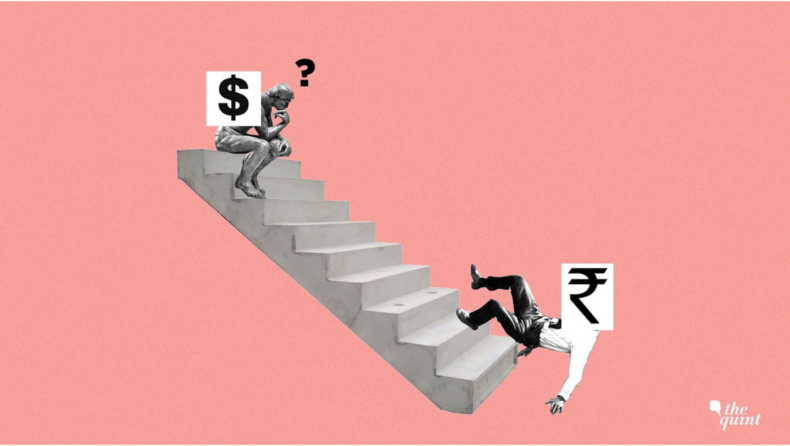The primary cause for the rupee decline is the withdrawal of funds from the Indian economy by FPIs and FIIs. FPIs had taken out Rs 2.32 trillion in the recent six months.
Since the beginning of 2022, there has been intense sell-off pressure on the rupee. Since the Russia-Ukraine conflict began out on February 20, 2022, the situation has gotten worse. The rupee was trading at 74.49 versus the dollar on February 21, 2022. It was trading at 79.24 on July 8—6% less than it had been on February 20. The value of the Indian rupee has repeatedly fallen below its all-time low during the past four and a half months. It reached 79.38 per US dollar on July 5, which was the most recent one.
The rupee is declining, why?
The primary cause of the currency’s depreciation is the withdrawal of funds by foreign portfolio investors from the Indian economy (FPIs). In the past six months, FPIs have removed Rs 2.32 trillion from the economy. It was mostly caused by central banks raising interest rates to control the spiralling inflation.
The rewards on deposits also rise in response to an increase in interest rates. In order to lodge their funds in banks and other financial institutions, foreign investors typically withdraw their money from riskier investment possibilities.
The increasing dollar index is another factor contributing to the rupee’s decline. Other currencies lose value when the index goes up. The index increased by 11% from February 21 when it was trading at 96.12 and July 8 when it was at 107.08.
The Russia-Ukraine war-related increase in commodity prices is another factor that has contributed to the rupee’s decline in value. Major producers of goods including oil, wheat, and fertilisers include Russia and Ukraine.
Due to the war’s disruption of most of the supply, prices have increased and India’s import expenditure has skyrocketed.
In layman’s terms, a large import bill causes the rupee to lose value since payments are paid in US dollars, which limits the amount of dollars available in the domestic economy.
How does it affect the RBI?
To stop the rupee’s decline, the Reserve Bank of India (RBI) sold dollars on the market. The central bank made its largest ever spot market auction in March 2022, selling $20 billion. The currency reserves have been depleted as a result of this. Forex reserves have decreased by $50 billion to $593.3 billion just in 2022.
Additionally, of India’s $621 billion total external debt, more than $200 billion must be repaid in the coming months. The decline in foreign exchange reserves might make things more difficult to navigate.
What can the RBI do to stop the decline of the rupee?
The RBI has taken a number of actions to halt the rupee’s devaluation. The restrictions on foreign cash non-resident bank accounts, or FCNR(B) accounts, known as the cash reserve ratio (CRR) and statutory liquidity ratio (SLR), have been eliminated. It has also made it possible for NRI deposits to earn greater interest rates.
To enhance the supply of rupees, the central bank can purchase the market’s bonds back. This may aid in lowering the dollar’s value. Sucking the liquidity out of the market is another strategy. The interest rates can be raised to do this. People typically deposit more money in their banks when interest rates are higher, which decreases liquidity. In keeping with this, during the past two months, the RBI has increased the repo rate by 90 basis points.
The Ukraine conflict is continuing, and inflation is likely to remain a worldwide concern, so the rupee’s problems and RBI’s difficulties may not be resolved anytime soon.
Read More-
- Former Japanese PM Shinzo Abe passes away shortly after being shot
- The shooting of Japan’s former leader shocks the country, scarce weapons
- A chronology of former Japanese Prime Minister Shinzo Abe’s career
- The rupee descent to successive record lows pits RBI against a bearish market
- Number of undernourished folks in India declines to 224.3 million; obesity among adults on the rise: UN report













